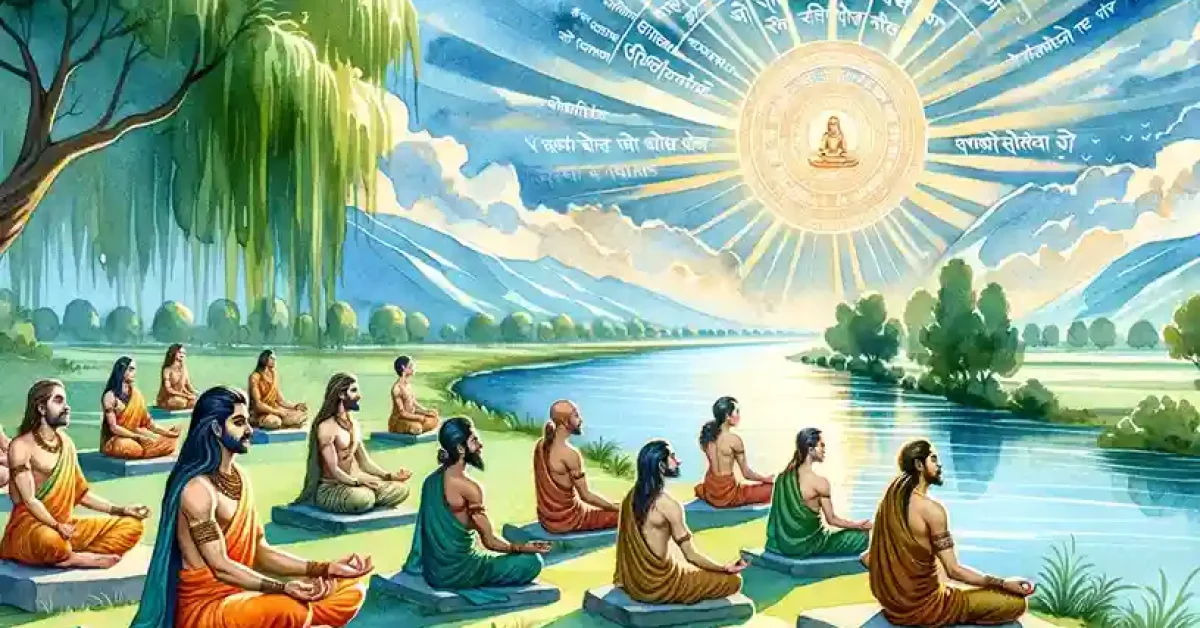The word ‘yoga’ paints a lot of different pictures in our minds. However, one question remains: What is the history of yoga? However, yoga is not limited to the pictures of stretches, flexibility, and exercises. It has advantages beyond the limitations of flexibilities and stretches.
It not only aids in strengthening the physical aspects of your health but also the mental aspect. It is a spiritual discipline aiming to keep eternal peace and harmony between body, mind, and soul. It aims at cleaning the mind with the bonus benefit of making one physically fit.
Cultural base of yoga
The word ‘yoga’ comes from the word ‘yuj’ which means to join or unite. The very origin speaks volumes about what it brings forth. It helps to associate the mind and body for better functioning and to work in peace. It aims at bringing your consciousness close to the Universe’s consciousness. This union is very essential for harmony in one’s life. This relation between humans and nature is said to bring forth ‘moksha’, or salvation.
Yoga aims to achieve self-actualization and peace, even in the face of some difficult tasks. Self-actualization is one of the only ways to attain the ultimate freedom and exert free will. It imparts basic human values and pushes them towards being more sustainable and joyful in life. Emotions like joy, peace, and gratitude are very necessary to lead a fulfilling life.
History of yoga – a timeline
Some sources say that yoga is just as old as time; as old as the dawn of civilization. However, some stories relate Lord Shiva to be one of the first yogi or the Adiyogi. It is said that he then imparted the knowledge to seven of his disciples. These seven disciples went to different parts of the world to spread their knowledge of yoga far and wide. The knowledge surely does find its way to humanity from various cultures.
However, it is just a lore with no research or evidence backing it up. However, it is believed that the discipline originated in North India, approximately 5000 years ago.
1. PRE-VEDIC PERIOD
This period dates back to 2700 BC, in the Indus-Saraswati Valley. There are findings of seals, and fossils where people are doing Yoga Sadhana. This just further strengthens the belief that the practice of yoga started in early times, although it was an undocumented era.
2. VEDIC PERIOD
The word ‘yoga’ was first mentioned in the Rig Veda of the ancient Sanskrit texts. It is said to be dated back to 1500 BC. These old texts mainly talked about rituals, mantras, and songs that the Vedic priests used to sing during their lifetime.
Later in the Atharva Veda, the importance of controlling breath was emphasized. This was in 900 BC. However, it is difficult to pinpoint the exact era during which the Vedas were passed down via word of mouth and stories.
Vedic priests, however, avoided self-indulgence and performed sacrifices called yajnas. They used certain poses that historians now believe could be yogic poses.
3. PRE-CLASSIC PERIOD
The 2000-year-old period in the history of yoga is mostly predominated by Upanishads. These explain the meaning of Vedic literature, reading between the lines, and explaining the coordination between body and mind. Moreover, it talks about spiritual teachings.
There are 108 written Vedic Upanishads, 20 of them were Yoga Upanishads. They focus on different yogic techniques that are still used in the modern day, like pranayama (breathing exercises), pratyahara (withdrawing senses), breathing modulation, sound, and meditation in complete peace. Within this period, yoga was divided into two forms: karma yoga and jyana yoga.
4. CLASSICAL PERIOD
The classical period seems to have lengthened from 500 BC to 800 AD. During this period, the importance of a peaceful mind as a consequence of yoga was highlighted.
This was the time when Yoga slowly and gradually crept into Buddhism and Jainism. It is a well-known fact that Lord Buddha was the first Buddhist to practice Yoga. Buddhist works focus on meditation and asanas, which assist in achieving Moksha or liberation. With the help of Lord Mahavira Jainism imbibed Yoga as well. He emphasized the power of meditation that would help one gain salvation and moksha.
Bhagavad Gita is 700 verses of teachings of Krishna with Prince Arjuna on Duty, Knowledge, Action, and Devotion. In this famous script of the world, Lord Krishna said that Yoga is in balance which means Samatvam Yoga uchyate. Yoga aims to unite man with nature. Which brings us joy to what we were before.
Maharshi Patanjali was the first yogi to properly discern the meaning of Yoga and why it was created in his Yoga Sutras. They called it Raja Yoga As I said, suggestions can be made for practicing one or the other from the four categories. According to the history, the first commentary on the Yoga Sutras was made by Veda Vyasa and the period where Yoga flourished was the classical period. The association of Yoga with Samkhya – the latter being one of the six Indian philosophies was brought to the surface and discussed.
Nata dances and martial arts incorporated techniques that referred to the Yoga sutras and wanted to emphasize the dance and martial forms. The classical period mainly emphasized the aspect of awareness in the practice of Yoga. Perhaps, yoga was being practiced in these years to the best of its ability.
5. POST-CLASSICAL PERIOD
The post-classical period was up to 1700AD. It proposed the names of many Yoga teachers that contributed to the creation of this stunning, cultural practice. Some of the yogis include Acharya Trayas – Adi Shankaracharya, Madhvacharya, Ramanujacharya, Meera Bai, and Purandara Dasa.
Hence the remaining time, Adi Shankaracharya spent his time in propagating Jnana Yoga and Raja Yoga. He spent a major portion of his lifetime elaboration and modifications in the yogic cultures. Meditation was also encouraged to depart the mind from bad thoughts.
Other yogins like Tulsida and Purandara had dedicated their efforts to the science of yoga. Hatha yoga, the Yoga of physical postures and breathing techniques, was made famous and is still famous to this day.
6. MODERN PERIOD
Swami Vivekananda can be counted amongst the key yogis who made yoga popular in the modern era i.e. from 1700 AD up till now. The period concerns Yoga as the manner of being bodily strong.
Ramana Maharshi, Ramakrishna Paramahansa, BKS Iyengar, K Pattabhi Jois, Paramhansa Yogananda, and Vivekananda had a role to play in the influence and growth of Hatha Yoga, Vedanta Yoga and Bhakti Yoga.
Yoga has certainly gone through a myriad of metamorphoses in many centuries. During this period, a lot of individuals have been forwarding a different number of theories for the propagation of its culture. But even for it to step into the 21st century; Yoga is perhaps best left to its feeling of being one with the spirit, mind, body, and nature.


